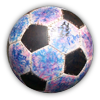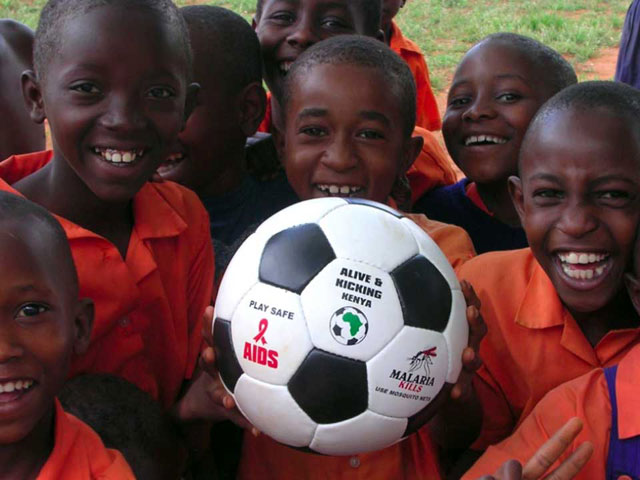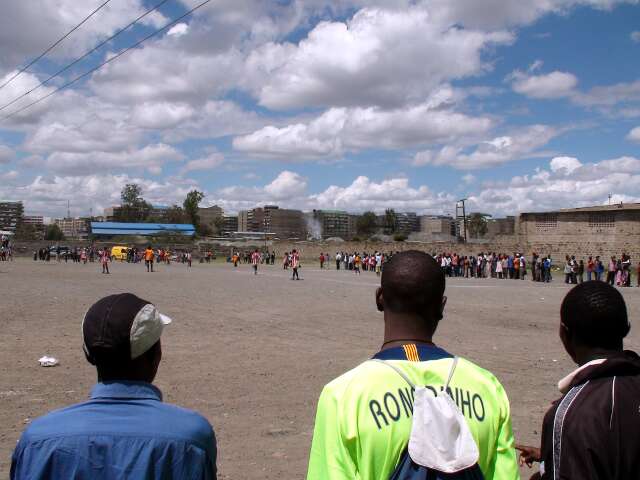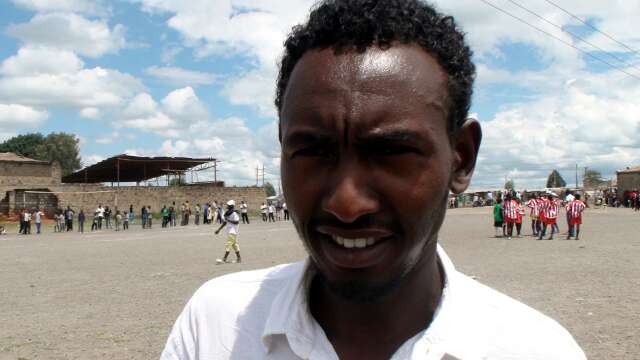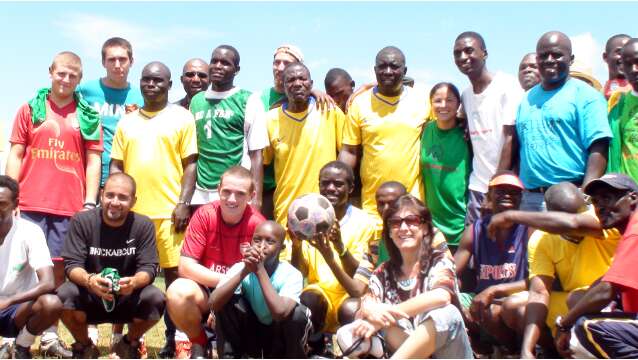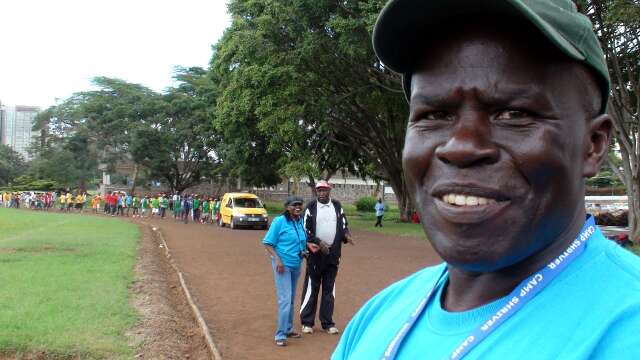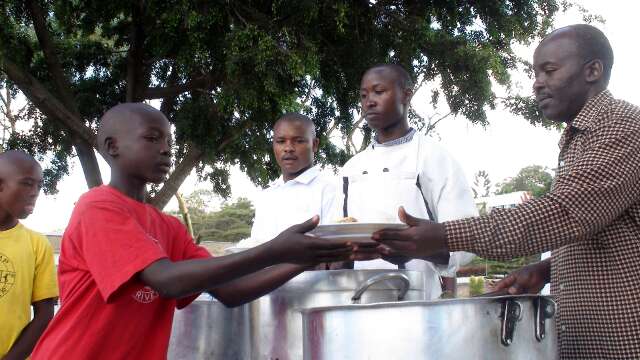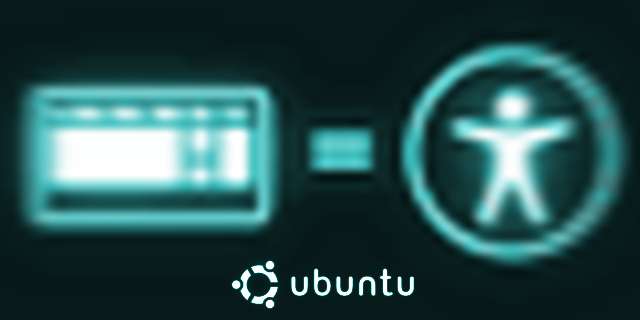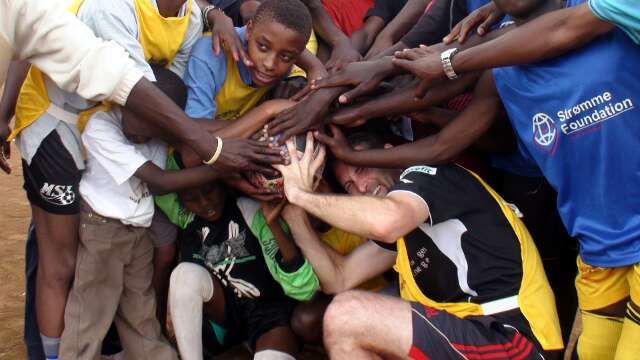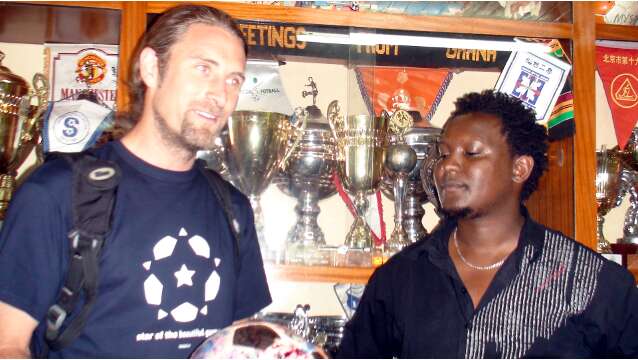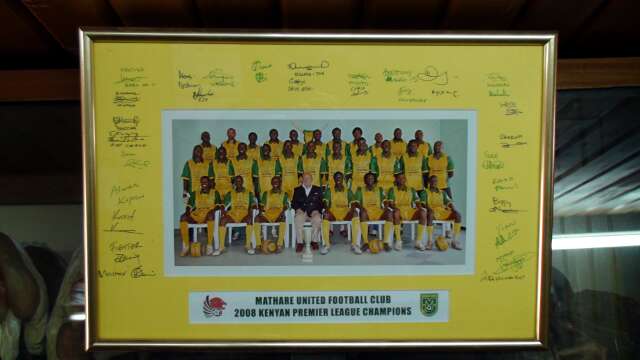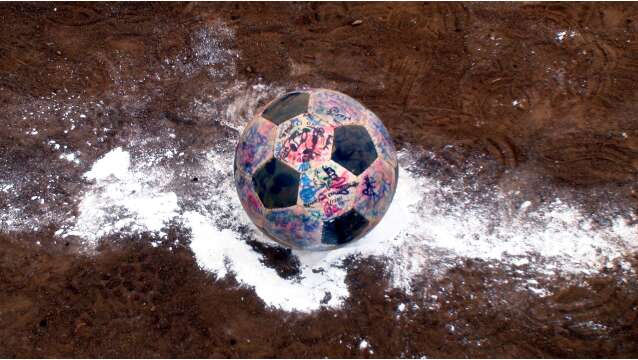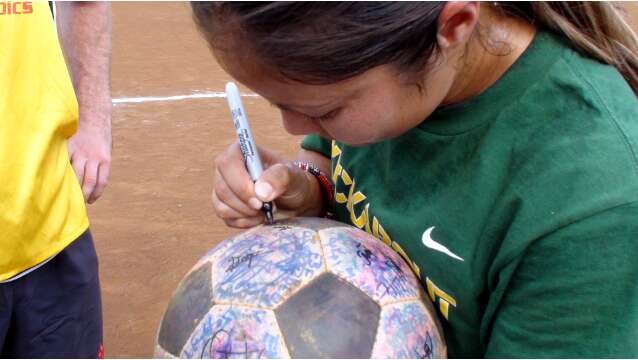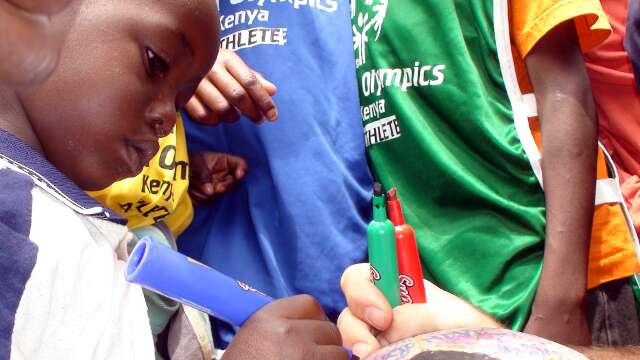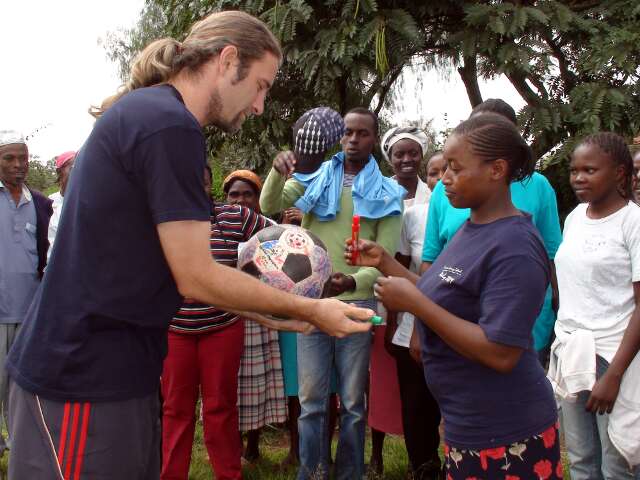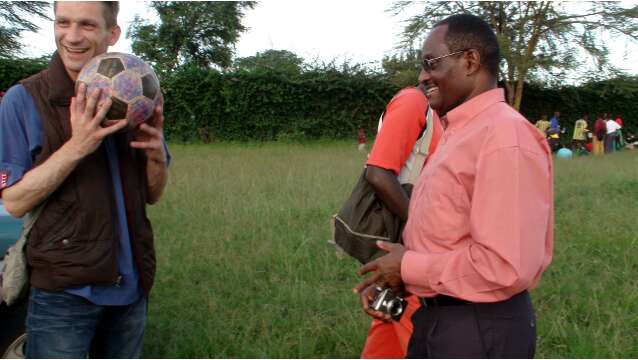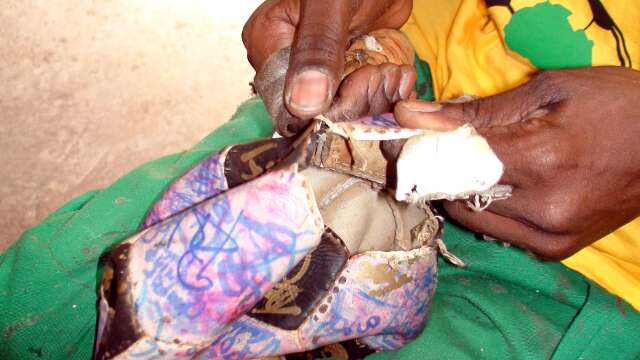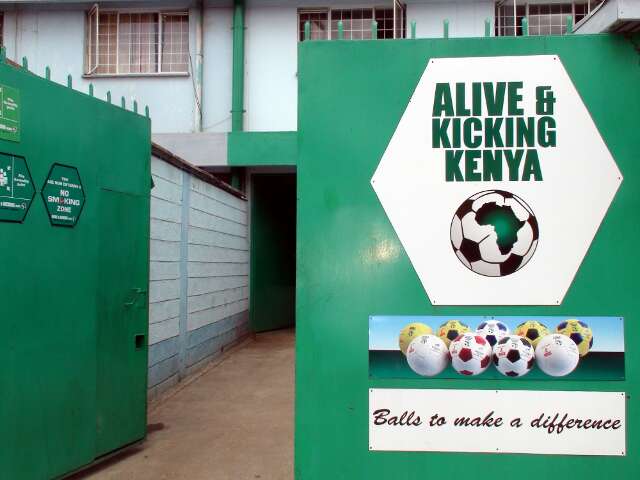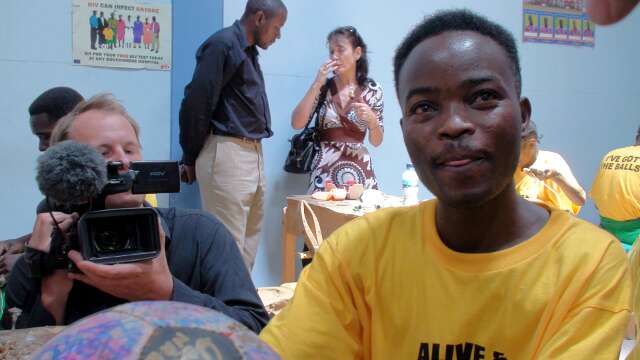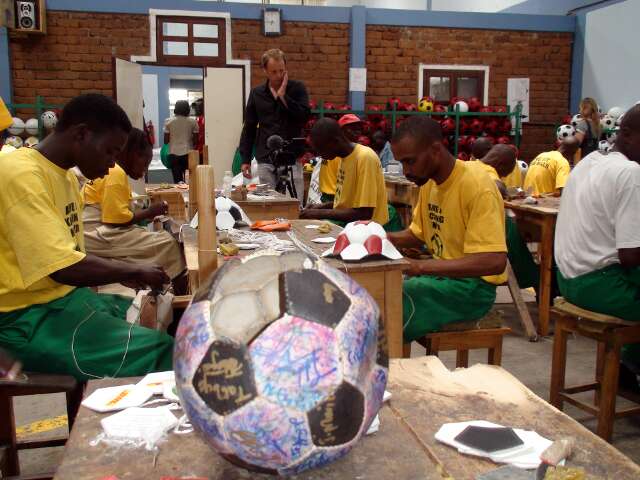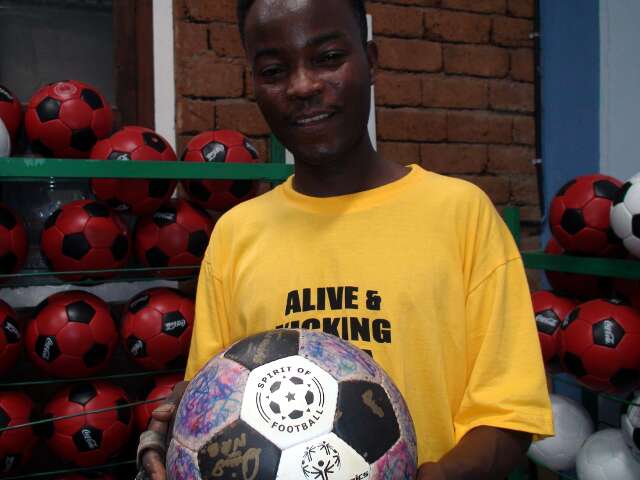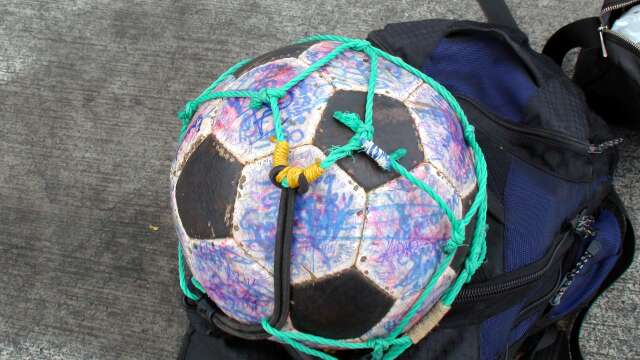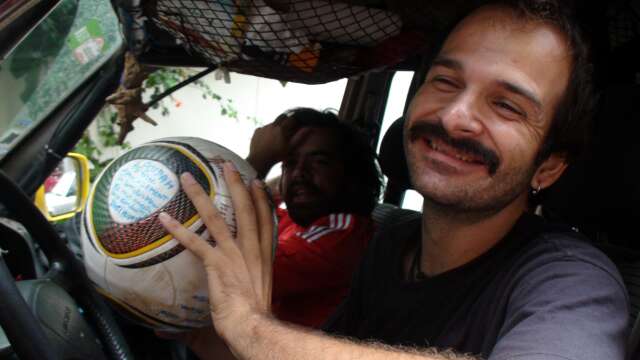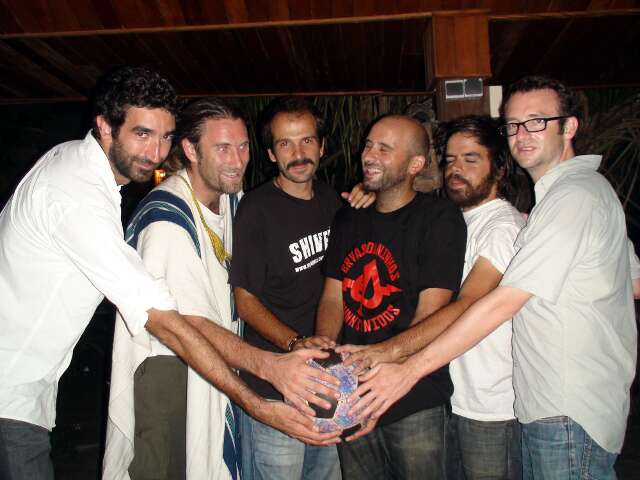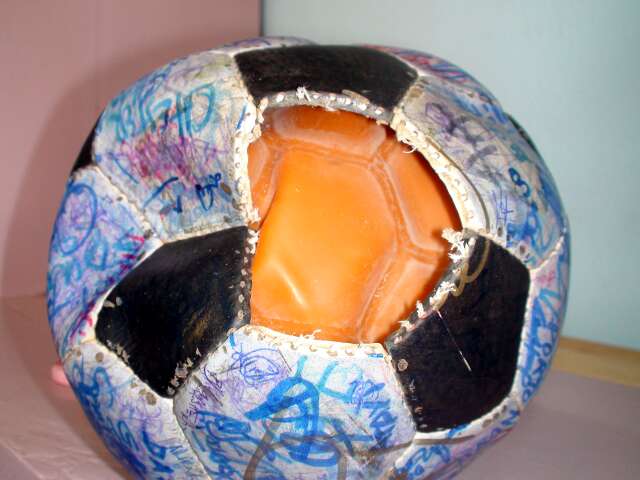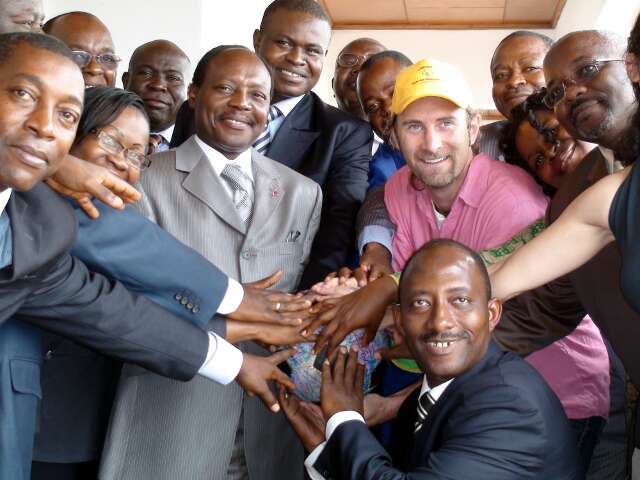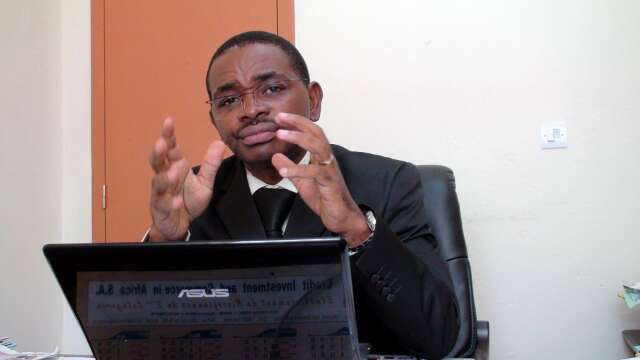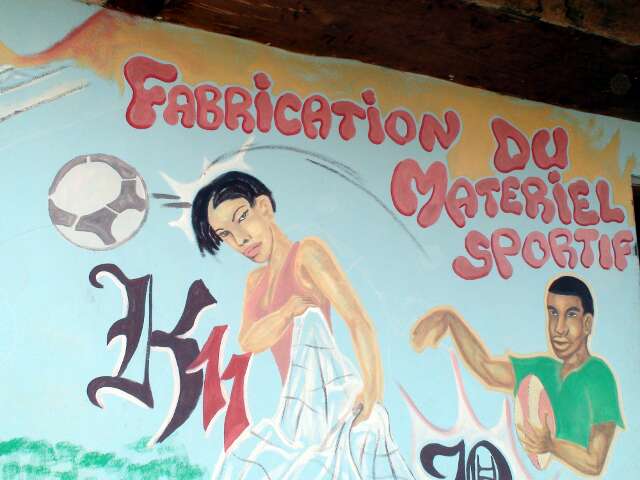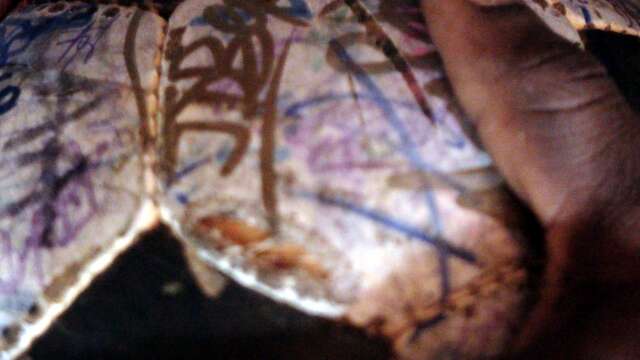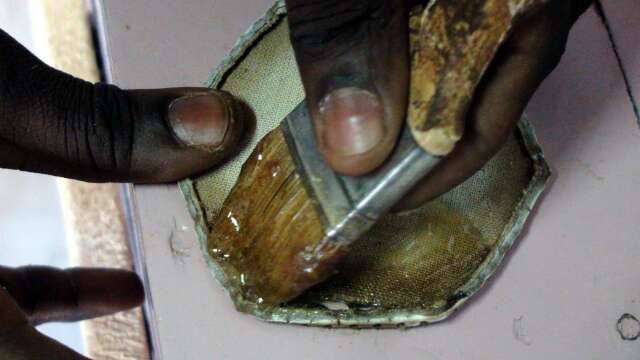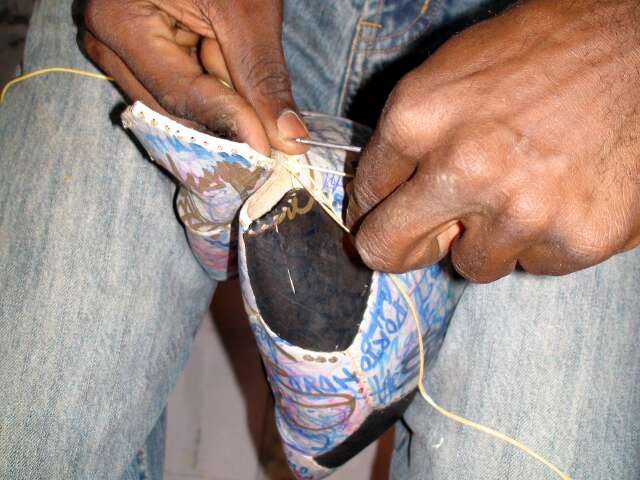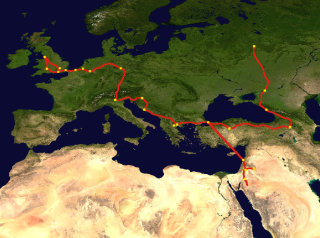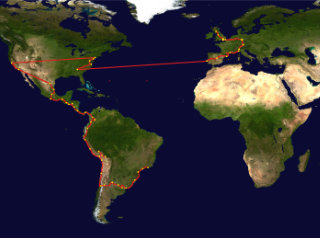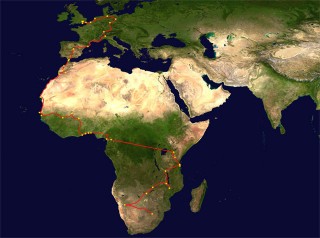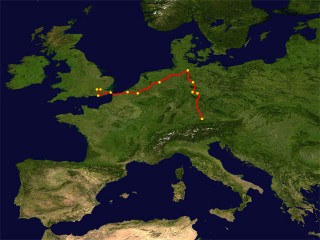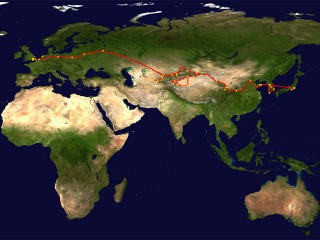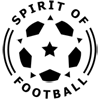“It’s called Score Against Substance Abuse,” Wario says. Behind him, on the touchline, two kids are sniffing glue from plastic bags. Andrew starts to warm up for a game. We look down. The football field appears to be covered in glass. A shiver goes down Andrew’s spine.
Wario Donne has been in contact with us since before The Ball left England. He’s been extolling the virtues of football in his work with youngsters in one of Nairobi’s largest and most notorious slums. His mission is to offer them a vision of life that offers them more than the attractions of drugs and crime. And he wants us to see how well it works. We go along with a contingent from Special Olympics Kenya who are keen to link up with SASA.
Can’t you clear the pitch of that glass?” we ask Wario. “Not really, the field is glass,” he replies. “We’d have to dig down six inches before we find anything other than glass.” No sliding tackles today then, Andrew thinks to himself. As Andrew carefully avoids going to ground on the field, Christian watches the action unfold from the touchline.
“What’s going on?” a bystander asks him.
“It’s Unified Football,” Christian explains, “people with intellectual disabilities and people without play in the same team.”
“Which ones are disabled?”
A pause. Christian smiles. A light goes on in the guy’s head.
“Thank you,” he says, “I understand now.”
You can’t stop kids sniffing glue. But you can offer them an alternative. Wario is engaging young people in playing football. He’s offering them the chance to join a team, make friends and compete in regular tournaments. And maybe the light will go on in the heads of those young people. Like it did with the guy Christian met on the touchline.
An early roll-call at Nairobi University today for the main Special Olympics event in Kenya. Athletes, parents, supporters and players are already assembled as we pile out of the DHL van with The Ball.
A parade around the pitch is followed by Unified Football. Sides run on to the pitch and, unusually, the captains meet at the centre-spot to decide the length of time they will play for. On this sweltering cloudless day, they opt for shorter halves than perhaps they would otherwise. “Thirty minute halves” comes the opening bid. The other captain looks up at the sky and the blazing sun and with sweat already forming on his forearms he replies: “15 minutes each way”. Every good haggle results in a compromise and twenty minutes each way is settled on. The result is fast and furious action, enjoyed by players and spectators alike.
And so to the main event — a team of Kenyan footballing legends takes the field to warm up for a game against a unified team of local Special Olympians and travelling football crews. Their team sheet reads like a who’s who of Kenyan football: Aggrey Lukoye, Josephat Murila, Tobias Ochola, Austin Oduor and Elly Adero are all in the starting line-up. Andrew is joined by Lorrie and Brian from Kickabout and two coaches from Arsenal, who have just arrived from Vietnam to give football training sessions with local NGOs.
It is a closely fought game, neither side giving an inch. Andrew scores a goal with a flying header, scuffing up his knees quite severely in the process. But it’s worth it — goal of the game, no doubt about it. The final score? It didn’t matter — the handshakes, the smiles, the memories were what this day was all about.
But the highlight of the event for us? Seeing everyone given a proper meal after the game, the Special Olympics athletes first in line, just as they should be.
Africa is feared for its viruses, but we weren’t expecting to succumb to the digital kind. But that’s exactly what has befallen us here in Kenya. We have a laptop running Windows XP which has just died of its infection.
Christian sits there, holding his head in his hands, staring at the machine. He’s wishing he had been more decisive and installed Ubuntu on the thing the moment he saw it was running Windows. And now the viruses have gone and corrupted the only copy of the Ubuntu installer. He can’t decide whether to laugh, cry or scream.
“Oh well,” he thinks to himself, “at least Andrew’s volunteered to carry it until it can be fixed!”
FLASH FORWARD: its just been fixed here in Lusaka, running a shiny new version of Ubuntu, which rocks. Perhaps we now stand a chance of catching up on this blog before we reach South Africa.
“The most important book of my generation was ‘The Joy of Sex’ but if I were to write a book, I’d call it ‘The Joy of Football'”
— Bob Munro, MYSA Founder and Chairman
In the world of football for development, the Mathare Youth Sports Association (MYSA) needs little introduction. Nominated twice for a Nobel Prize, this organisation which began humbly in the impoverished Mathare slum has touched the lives of more than 150,000 people in Nairobi. It is recognised throughout the world as a model for how sport can have a positive impact in a disadvantaged community.
John Ndichu Ng’ethe proudly stands in front of an impressive trophy cabinet. He has come through the ranks at MYSA from youth project participant to youth leader to his current post as PR Manager. He tells us in detail and from experience about how the organisation works and what the results have been. MYSA offers us inspiration and encouragement. We recommend checking out their website for the full story.
After hearing their story, we tell the story of The Ball to a packed room. And then it’s on to the reason for our visit, another unified game — a youth team from Mathare United (yes, they have a professional club with players drawn exclusively from MYSA) versus a unified team of Special Olympians, Kickabout and ourselves. Mathare United are clearly superb footballers and toy with the unified team, passing accurately and scoring freely.
Not even the introduction of our ringer, former USA Womens World Cup winner Lorrie Fair, stems the tide. Fair’s more than fair though, and gets a huge cheer from the girls on the touchline — who are clearly impressed by her skill — every time she gets the ball.
The final scoreline is a fitting testament to the success of MYSA. There is no shame in being beaten by the better team. Losing gracefully is one of the most important lessons in the art of taking part.
The traffic enforces our adherence to “Africa-time”. We leave Arthur and Sanna de Leeuw’s house — many thanks for letting us stay with you guys — with Joe Karanga navigating the potholed roads and insane congestion of Nairobi for our first appointment of the day at Kenyatta University.
The sun is blazing already as we arrive and are greeted by Peter Wanderi, a university lecturer who introduces us to his colleagues who volunteer with Special Olympics. We are introduced to a large group of parents of athletes, who are huddled in the only shade around, provided by a small tree at the edge of the playing field where their children are getting sports coaching.
Andrew speaks to them about The Ball and its mission and we are impressed to learn that they have formed their own support network as a result of showing up along with their children every week. They are supported whole-heartedly by staff and students from the university. This really is an extended family. All are invited to sign The Ball — with the usual condition that they kick or head it first. Headers are delivered in quick succession.
Then we are mobbed by the children. There are just too may of them to consider going one by one so we devise a solution. An enormous circle is formed, and The Ball is knocked around allowing everyone to have a touch and a turn in the middle. Then a mass signing takes place: five markers and more than a hundred children with Andrew in the middle somewhere.
The smiles and laughter are testament to the power of The Ball to bring a little light into every situation.
England, Somerset, Radstock, Tuesday evening. I walk downstairs after settling my son, Alistair, in his bed for the night. I have resigned myself to my scheduled flight to Kenya being cancelled indefinitely by the intervention of the Icelandic volcano. The TV is showing the news. My attention is suddenly grabbed. Flights are back on — and mine appears to be one of them. With a start, I realise that I might just have put my son to bed for the last time until July.
Ah, the romance of air travel… where did it go? Come to think of it, did it ever exist? As usual, it’s a case of a few hours of fitful sleep, stopovers and sharing personal space with strangers, customs and immigration officials alike. Finally, touchdown in Nairobi. But luggage delays prevent me from joining Andrew at Alive & Kicking to meet Bernard, the maker of The Ball.
And so Joe Karanga, who meets me at the airport (and has patiently waited for me to emerge with my luggage) whisks me off to a project where Andrew and The Ball are rumoured to be waiting for me. And indeed they are. I haven’t seen Andrew since we parted ways in Casablanca. Then in the distance, there he is, camera in hand, and I break out into a spontaneous “ole ole ole”. Reunited for the final leg through East Africa to the World Cup.
But where is The Ball? Ah, there it is. Or is it? This one looks distinctly worse for wear and is, strangely, a weirdly misshapen.
Andrew explains that many thousands have signed it since I last saw it and that it has just been repaired, two new panels fitted which are smaller than the existing ones, giving it its, ahem, unique shape. Some keepie-uppie immediately reassures me that this is indeed no just any ball — it is The Ball.
What seems like an age ago, The Ball was hit by a car in Abidjan and rushed to hospital. But the wound got bigger and bigger and bigger… eventually it was so big that The Ball had to be taken to see a ball doctor last week in Yaounde, Cameroon, where it got temporary stitches. Now The Ball has returned back to the place in Kenya where it was made.
How would it feel to meet your maker? I get a little bit little nervous for The Ball as it is about to do just that. Bernard is very happy to see The Ball, his creation, again. How different it looks now, covered as it is in over 10,000 signatures and kicked in hundreds of games of football.
Bernard sets about restoring his creation to full health. He removes two wounded panels. He then removes and replaces the bladder in a particularly delicate procedure. It is one of the more difficult operations Bernard has had to undertake. Not least because the press surround him as he works his magic. At last, The Ball is ready to be made whole again — brand new panels are fitted over the gaping hole.
We know it is not just any ball, but The Ball is now huge. It has increased in size considerably due to getting soaked in Dakar, then dried out in the searing heat of Mali and Burkina Faso, then wet and dry again in the high humidity of Atlantic West Africa from the Ivory Coast through to Cameroon.
The Ball is now fit as a fiddle, but slightly groggy and a wee bit out of balance… the new panels are much smaller than the old ones that have stretched from all the wind, water, wear and tear. It bounces in an oddly uneven way now.
Oh well, I suppose it’s nothing that a good kicking won’t fix!
It’s time to leave West Africa. Goodbye, it’s been fun. Thousands of miles are behind us, hundreds of games of football have been played and The Ball is covered in signatures. From 40 degree plus scorching heat in Kayes to the sweat-fest of the Atlantic coast, from police escorts to police road blocks, from fresh fish and rice to barbequed cow on street corners, from Isle de Gore to Cape Coast, from the Voodoo Pope to the Gospel church, from Hearts of Oak Accra to Search and Groom Nigeria, massive train rides, DHL cargo flights… ahhhh West Africa has been a blast.
As I proceed through customs, they stamp and sign The Ball but tell me that the The Ball needs to be deflated for the flight to Ethiopia and the onward connection to Nairobi, Kenya. I am told it would be a safety risk otherwise. The flat Ball is stored in a net on my backpack. It is the same net that was used to carry The Ball to the World Cup in 2002. Back then, the net and The Ball 2002 were permanently attached to Phil’s backpack.
At the airport in Addis Ababa I just happen to bump into the Ethiopian Under 17 National Team. I invite them to kick and sign The Ball which they are more than happy to do. Then we are off to Kenya. East Africa is beckoning and I am excited to be joined by another player. Christian is back on The Ball. The last time we saw each other was in Casablanca.
Of all The Balls in all the world this one will bounce back into his path sooner or later.
I’m sitting in the internet cafe at the German Seaman’s Mission, our accommodation in steamy Douala. It is the last night for The Ball in Cameroon. As I frantically type an e-mail and organise the next leg of the mission, I hear someone utter the name Roger Milla. I swing around and see a southern European gentleman, unshaven, sporting what looks like a 1970’s porn star moustache, talking to two others. Our eyes meet. Do we know each other?
Back in Casablanca in February, Nicole Matuska had told Christian and me about a group of Portuguese journalists who were also on a trip to the World Cup. Phil and I heard more about them from a young Portuguese lady one boozy evening in Ouagadougou. A week later in Abidjan, at a visit to the famous football academy of ASEC Mimosas, they came up once again. It seems inevitable that our paths would cross.
“Are you from Portugal?” I ask. “Yes,” comes the response. “Are you going to the World Cup?”, “Yes” again. “Roger Milla is not in Yaounde,” I say. A knowing look — You must be from Spirit of Football.” It turns out that we know about them and they know about The Ball. And, what’s more, there are three French guys on another journey to the World Cup who are also in town. It’s going to be a World Cup trip dinner tonight.
The Portuguese journey started in Lisbon on the 9th of January. They have been on the road the longest. We kicked-off our journey on January 24th in London. And the French trip, which is sponsored by TV Channel Voyager (France’s answer to the Discovery Channel) began on the 6th of February in Paris.
The Portuguese are die-hard Benfica fans. I take great pleasure in taunting them about Liverpool (my team) having knocked Benfica out of the Europe League a few weeks ago. They talk about their emotional goodbye from friends and loved ones in Lisbon — it sounded dramatic. The final goodbye from hysteric, wailing mothers expecting never to see their children again — Africa would be the end of them, they thought.
The French duo’s farewell was not quite as emotional. They are an interesting pair. One of them is a football fan. The other hates football but loves Africa. Their story is one of anti-football and pro-football contrasted against an African backdrop. “Are you falling in love with football” I ask the non believer. “Not really” comes the reply, “but I can understand it more.” “Are you falling in love with Africa” I ask the other, “Yes,” the emphatic answer. The love of Africa and of travel and mostly of football is what brings us all together. Sharing common themes through very different experiences.
We talk about life on the road in Africa, the ups and downs, the near misses, the pressures of reporting the journey. We go our separate ways, but not before making optimistic plans to meet up again with the Portuguese in Zambia, the French in Namibia and the Portuguese again in Johannesburg on the eve of the Opening Ceremony.
All roads here lead to the World Cup.
“Oh, a Kenyan ball,” said the Cameroonian Minister for Youth and Sport. “Next time, you should use a Cameroonian ball.”
Overcoming his surprise, the Minister then tells us about the Cameroonian Society for the Employment of Youth (RIFMAS) which runs a programme called Fabrication du Materiel Sportif.
“We employ youths to produce footballs and nets. We have 35 employees in four regions of the country. We produce footballs because the public demands them. We sell the balls produced to schools at a very good price.”
The Minister insists that we meet Levi Herve Oyono, the Director of RIFMAS. Andrew tells Levi that The Ball was hit by a car in Abidjan and taken to hospital, where it was bandaged up.
“Ah, you can get it repaired at our stitching centre,” says Levi, as he inspects The Ball.
“No,” says Andrew, “it’s going back to Alive & Kicking in Kenya to be restitched. The panels can’t be replaced, but could The Ball get a patch?”
“Okay, no problem,” comes the reply. “You can visit our workshop in Yaounde.”
The next day, we arrive at Fabrication du Materiel Sportif. The Ball Doctor is waiting for us. His name is Bekala Florent Esto and, with practiced hands, he slowly and gently examines The Ball’s wound.
His diagnosis? “I’ll remove this panel and stitch a patch of leather over the wound. It is a great pleasure for me to repair this great ball. I heard about The Ball on the radio and I am honoured to do this.”
With the care of a professional surgeon, The Ball Doctor removes the damaged panel, and glues a carefully cut strip of leather over the hole on the panel’s underside. Then, he stitches the leather strip on to the panel and the panel back on to The Ball. It is a fine operation and shows his splendid skill and craftsmanship.
The Doctor weighs The Ball in at 3.5kg. Fit as a football. He pumps The Ball up and it’s ready for use again. Its roundness is even back once more. He measures it as 76cm.
“Slightly oversize,” he says.
It’s quite unusual for a patient to get a good kicking after an operation, but in this case, that’s exactly what happens.
